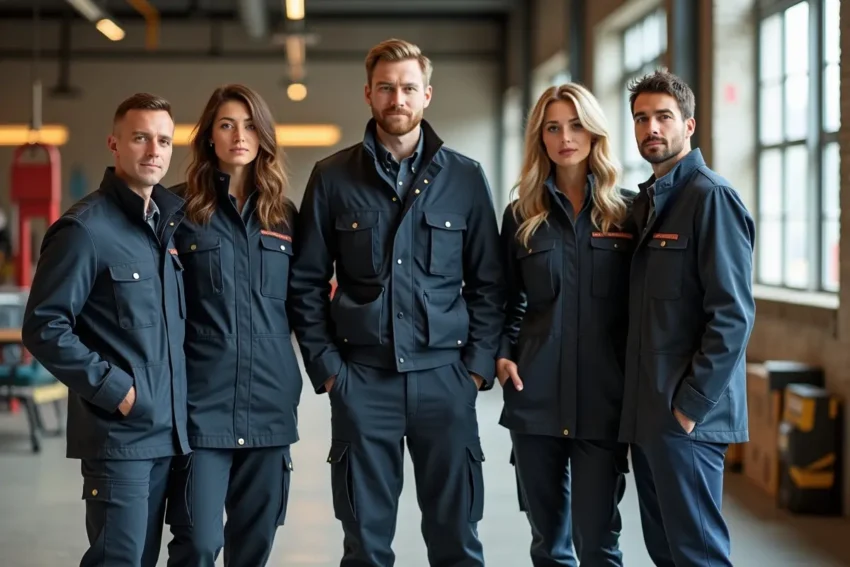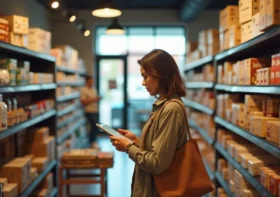From Office to Outdoors: Fashionable Branded Workwear Ideas

Companies today understand that work clothes must be functional in a wide range of workplaces. Uniforms no longer end at the office door; they need to take employees through meetings, travelling and field work just as easily.
Employees who need to dress flexibly can include personalised workwear fleeces in their wardrobes. These jackets will keep them warm and provide branding for the company that they work for. Branded workwear shows how fashion and usefulness can be mixed and paint a business image while creating a uniform appearance for employees.
Contents
- 1 Tailored Designs for Indoor Settings
- 2 Layering for Transitional Spaces
- 3 Outdoor Durability With a Modern Edge
- 4 Seasonal Updates to Enhance Versatility
- 5 Fashion-Forward Details in Everyday Apparel
- 6 Sustainability and Material Choice
- 7 Customisation for Identity and Cohesion
- 8 A New Standard for Branded Workwear
Tailored Designs for Indoor Settings
Office-based employees continue to be dependent on shirts, smooth blouses, and loose trousers. Unobtrusive branding like embroidered logos or group colours helps to support identity without the overall image feeling cluttered. Natural colours such as graphite or navy are lightweight enough to be used daily, with the accessories being small details that lend class. These aspects enable the employees to project an elegant image when dealing with clients or in internal meetings.
Layering for Transitional Spaces
When workers are at work, they may need to travel. The lightweight jackets, softshells, and gilets offer the flexibility to those on the staff who move between settings constantly. Not only does a layered approach provide some form of comfort, but it also keeps the branding the same across different garments. This continuity will ensure staff are identifiable and unified, whether indoors or outdoors.
Outdoor Durability With a Modern Edge
Workers who spend a lot of time outdoors need clothes that can resist the weather and wear. Waterproofs, insulated jackets and solid boots of good quality ensure comfort even in an extreme situation.
Instead of embracing high-visibility gear only, most companies are now opting to use colour palettes that appear modern, yet they satisfy safety requirements. These current options merge durability and style to produce uniforms that work and impress at the same time.
Seasonal Updates to Enhance Versatility
As the weather changes throughout the year, workwear collections adapt accordingly. Breathable fabrics and short-sleeve options suit warm weather, while thermal layers and knit accessories provide comfort in winter. Hospitality and retail brands often adjust their apparel seasonally to keep teams looking fresh and relevant. This adaptability demonstrates attentiveness to both staff comfort and brand presentation.
Fashion-Forward Details in Everyday Apparel
Subtle changes in cut, pattern, and finish can elevate otherwise simple items. Tapered trousers, contrasting stitching, or collar variations create a unique look while remaining professional. Businesses that embrace these details show that uniforms do not need to appear standardised or uninspired. Small but thoughtful touches enhance staff confidence and customer perception alike.
Sustainability and Material Choice
Workwear is becoming more environmentally friendly in a wide range of designs. The reuse of polyester, organic cotton, and low-impact dyes shows that there is an increasing level of environmental awareness. Clothing made using these materials is durable and does not compromise style. Brands specialising in sustainable fabrics may be regarded as dealing with even greater values, which the modern consumer who prefers to make ethical choices finds desirable.
Customisation for Identity and Cohesion
Personalisation means that staff clothing represents a corporate image as well as the role of an individual. Departments or job positions in a group are differentiated by contrasting trims, logos, and custom cuts. Another chance to reinforce identity is through accessories that are aligned with the primary garment, such as a scarf or hat. This personalised information supports businesses by enhancing identification and encouraging harmony.
A New Standard for Branded Workwear
The development of personnel clothing demonstrates that both function and fashion do not exist separately anymore. The flexibility, style and durability have been integrated into the workwear in the boardrooms and construction sites.
Businesses can design wardrobes that serve functional purposes as well as provide a fashionable uniform with seasonal adaptability, sustainable fabrics, and customisation by adopting layered garments and a tailored design. Workwear has now become an important aspect of professional identity, which moves effortlessly for travel.



